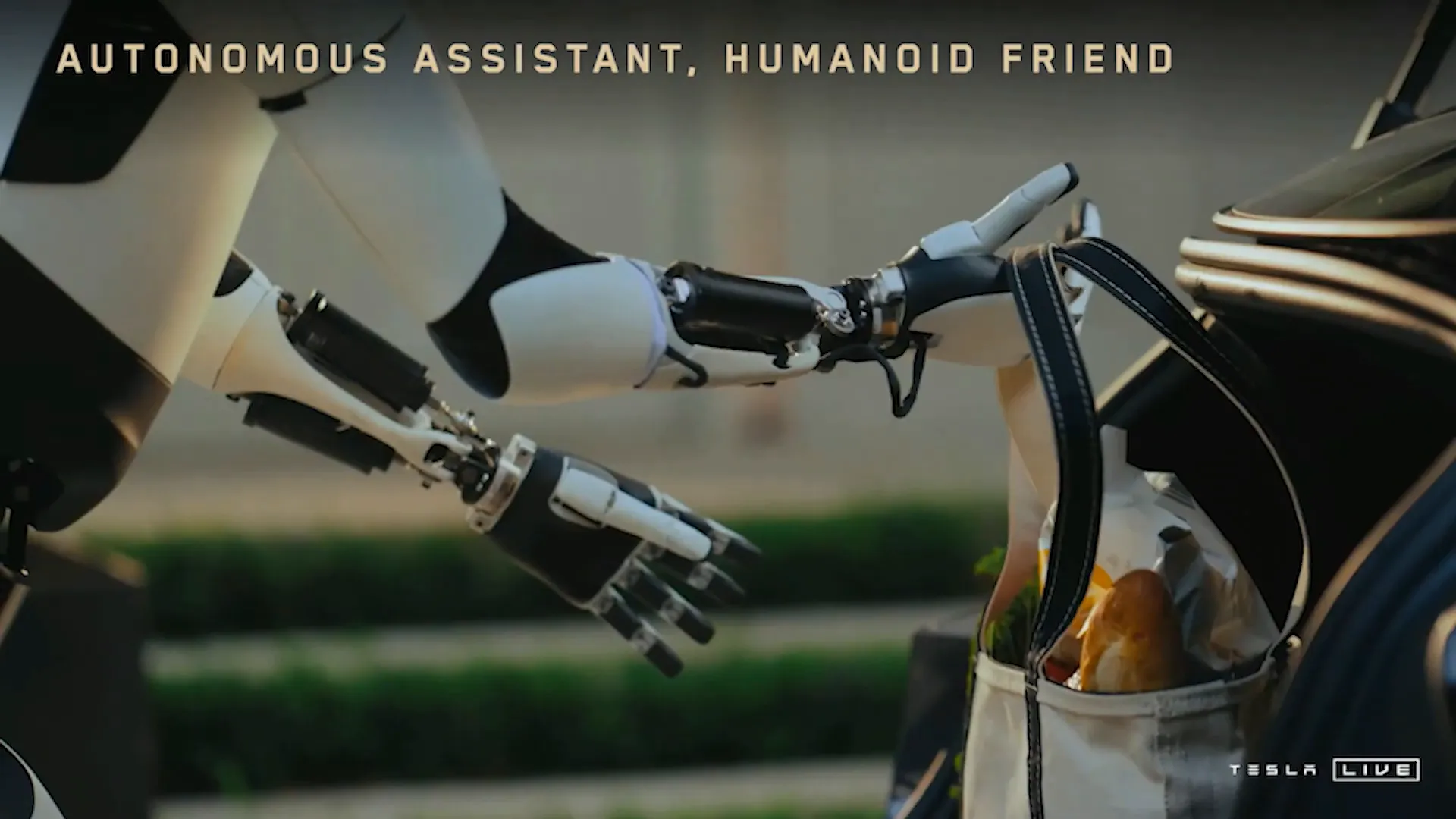In an era defined by rapid technological advancements, Tesla's latest innovations promise to revolutionize the cyber transport landscape. From the unveiling of the autonomous Cyber Cab to the versatile Robovan and updates to the Optimus robot, Elon Musk's vision for the future is not just ambitious but transformative.
Table of Contents
- The Arrival of the Cyber Cab
- Inductive Charging: The Future of Electric Vehicles
- Introducing the Robovan: A Solution for High Density
- Conclusion
- The Evolution of the Optimus Robot
- The Future of Personal Robots
- Conclusion: Tesla's Vision for the Future
- FAQs about Tesla's Cyber Innovations
The Arrival of the Cyber Cab
Welcome to the future of transport with the introduction of the Cyber Cab. This fully autonomous vehicle is a remarkable leap forward in the realm of cyber technology. With no steering wheel or pedals, passengers can experience a truly driverless ride.

Revolutionizing Transportation Costs
The cost efficiency of the Cyber Cab is one of its most compelling features. Traditional public transport systems can be expensive, often costing around a dollar per mile. In stark contrast, the Cyber Cab is projected to reduce operational costs to approximately twenty cents per mile, making it a game changer for urban mobility.

Affordability and Accessibility
As the Cyber Cab technology matures, the price point is expected to be below thirty thousand dollars. This affordability opens the door to individualized mass transit, allowing more people to benefit from the convenience of autonomous vehicles.

Inductive Charging: The Future of Electric Vehicles
Inductive charging represents a significant advancement in electric vehicle technology. With the Cyber Cab, there's no need for a physical plug; it simply charges wirelessly. This innovation not only enhances user experience but also simplifies the logistics of charging electric vehicles.

Impact on Electric Vehicle Infrastructure
By utilizing inductive charging, the infrastructure required for electric vehicles will transform. Charging stations can become more streamlined, reducing the need for bulky charging units. This shift could lead to a more integrated and user-friendly environment for electric vehicle owners.
Introducing the Robovan: A Solution for High Density
The Robovan is designed to address the challenges of urban density. Capable of carrying up to twenty people or transporting goods, this vehicle is versatile and efficient. Its design caters to both passenger transport and logistics, making it an essential asset for cities.

Cost Efficiency for Group Travel
Traveling in groups can often be costly. However, the Robovan aims to reduce expenses to as low as five to ten cents per mile. This affordability will encourage more people to opt for shared transport solutions, reducing the number of vehicles on the road and contributing to a cleaner environment.
Configuration Versatility
The ability to configure the Robovan for different purposes—whether for transporting people or goods—adds to its appeal. Cities can utilize this vehicle to meet various transportation needs, from sports teams to delivery services, showcasing the adaptability of autonomous transport solutions.

Conclusion
As we delve deeper into the advancements in cyber transport, it's clear that the Cyber Cab and Robovan represent just the beginning. The integration of cutting-edge technology with user-friendly design is paving the way for a cleaner, more efficient transportation system.
The Evolution of the Optimus Robot
The Optimus robot represents a significant leap in robotics technology. Unlike traditional robots, Optimus is designed to integrate seamlessly into human environments, using advanced AI and machine learning. This evolution aims to create a machine that can function in various roles, enhancing everyday life.

Technological Foundations
At its core, the Optimus robot utilizes technology developed for Tesla's vehicles, including batteries, power electronics, and advanced motors. This shared technology allows for efficient energy use and high performance, ensuring the robot can operate effectively in a variety of scenarios.

Practical Applications
Optimus is designed to perform numerous tasks, making it highly versatile. It can serve as a personal assistant, taking care of household chores, or even providing companionship. The potential applications are vast, limited only by imagination.
- Household Tasks: Mowing lawns, cleaning, and grocery shopping.
- Personal Assistance: Babysitting and tutoring children.
- Social Interaction: Serving drinks and providing companionship.

The Future of Personal Robots
The future of personal robots looks bright as technology advances. With the anticipated affordability of the Optimus robot, owning a personal assistant may soon be a reality for many households. This shift could redefine how we interact with machines on a daily basis.

Affordability and Accessibility
Predicted to cost between twenty to thirty thousand dollars, the Optimus robot will be within reach for many consumers. This price point is crucial for widespread adoption, enabling families to consider incorporating a personal robot into their lives.
Integration into Daily Life
As personal robots become commonplace, their integration into our daily routines will transform the way we live. Imagine a world where tasks are automated, allowing more time for leisure and creativity. The Optimus robot is poised to play a central role in this new lifestyle.

Conclusion: Tesla's Vision for the Future
Tesla's vision extends beyond vehicles, aiming to revolutionize how we live and work through robotics. The Cyber Cab, Robovan, and Optimus robot are just the beginning of a transformative journey. As these technologies develop, they promise to create a more efficient, interconnected future.

FAQs about Tesla's Cyber Innovations
What is the main purpose of the Optimus robot?
The Optimus robot is designed to assist with everyday tasks, providing companionship and enhancing quality of life.
How much will the Optimus robot cost?
It is expected to cost between twenty to thirty thousand dollars, making it accessible for many households.
When can we expect to see these robots in homes?
While exact timelines are uncertain, the goal is to have the Optimus robot available for purchase within the next few years.
What other applications can the Optimus robot serve?
Beyond household chores, it can also be used for education, companionship, and various personal assistance roles.



0 Comments